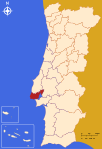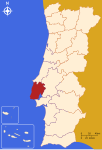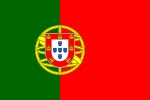Lisbon Astronomical Observatory
Astronomical observatories in PortugalBuildings and structures in LisbonHistory of science museumsMuseums in LisbonScience and technology in Portugal ... and 3 more
Science museums in PortugalUniversity museumsUniversity of Lisbon

The Lisbon Astronomical Observatory (Portuguese: Observatório Astronómico de Lisboa) is an astronomical observatory located in Tapada da Ajuda, in the civil parish of Alcântara, municipality of Lisbon. Recognized internationally for its quality of work in the field of positioning astronomy (since the 19th century), in 1992, it became a dependency of the University of Lisbon (and later, part of the Faculty of Sciences), responsible for scientific and historical research, along with media relations.
Excerpt from the Wikipedia article Lisbon Astronomical Observatory (License: CC BY-SA 3.0, Authors, Images).Lisbon Astronomical Observatory
Tapada da Ajuda, Lisbon Alcântara (Alcântara)
Geographical coordinates (GPS) Address Website External links Nearby Places Show on map
Geographical coordinates (GPS)
| Latitude | Longitude |
|---|---|
| N 38.710538888889 ° | E -9.1875055555556 ° |
Address
Observatório Astronómico de Lisboa (Observatório Astronómico Dom Luís;Observatório Astronómico da Tapada da Ajuda;Observatório Astronómico da Ajuda)
Tapada da Ajuda
1300-320 Lisbon, Alcântara (Alcântara)
Portugal
Open on Google Maps










